Introduction
This rounded, deciduous tree eventually has wide-spreading branches, which are green when young and covered with spines, often becoming grey and sometimes losing their course, sharp spines. Young trees can have a columnar or upright form. The spiny trunk is unusually thick and remains green even on older trees. Silk-floss trees can reach 50 feet in height with an equal or greater spread, and grow rapidly the first few years, then more slowly. Some trees maintain a relatively narrow crown with one straight trunk while others are wide-spreading, particularly on older specimens. The large, showy, pink and white, five-petaled flowers, which somewhat resemble narrow-petaled hibiscus, are produced in small clusters in fall and winter (usually October) when the tree is nearly bare. The fruits are large, 8-inch-long, pear-shaped, woody capsules, filled with silky, white, kapok-like floss and pea-like seeds. Floss from the seeds was used for stuffing pillows, and thin strips of the bark have been used to make rope.
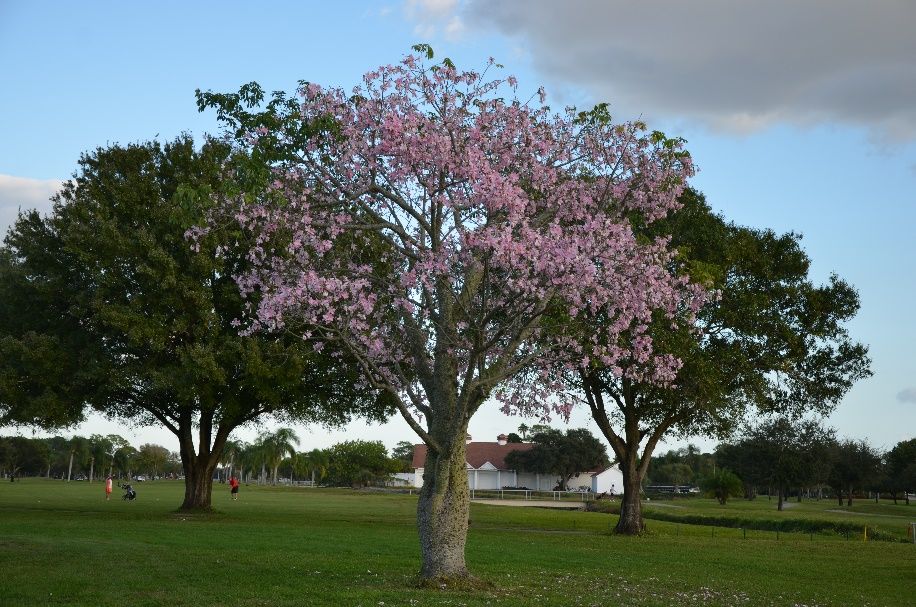
Credit: Stephen Brown, UF/IFAS
General Information
Scientific name: Ceiba speciosa
Pronunciation: SAY-buh spee-see-OH-suh
Common name(s): Silk-floss tree
Family: Malvaceae
USDA hardiness zones: 10A through 11 (Figure 2)
Origin: not native to North America
Invasive potential: not considered a problem species at this time, may be recommended (North, Central, South)
Uses: shade; specimen; street without sidewalk; highway median
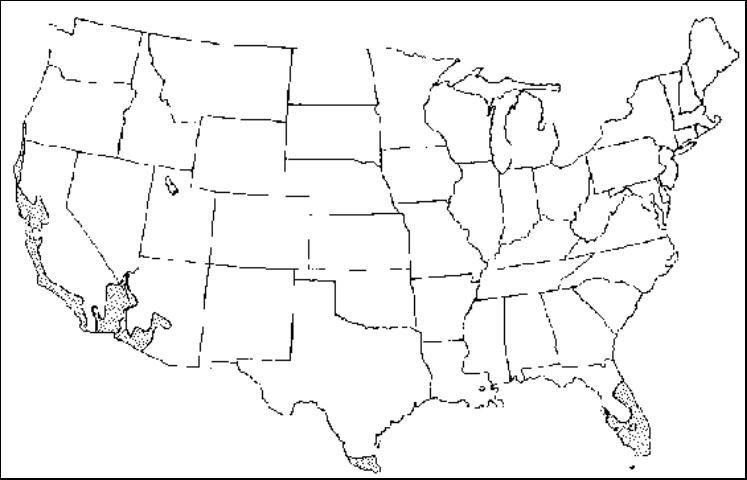
Credit:
Description
Height: 35 to 50 feet
Spread: 40 to 55 feet
Crown uniformity: irregular
Crown shape: upright/erect, round, pyramidal
Crown density: moderate
Growth rate: fast
Texture: coarse
Foliage
Leaf arrangement: alternate (Figure 3)
Leaf type: palmately compound
Leaf margin: serrate
Leaf shape: elliptic (oval)
Leaf venation: pinnate
Leaf type and persistence: deciduous
Leaf blade length: 2 to 4 inches, 4 to 8 inches
Leaf color: green
Fall color: no color change
Fall characteristic: not showy
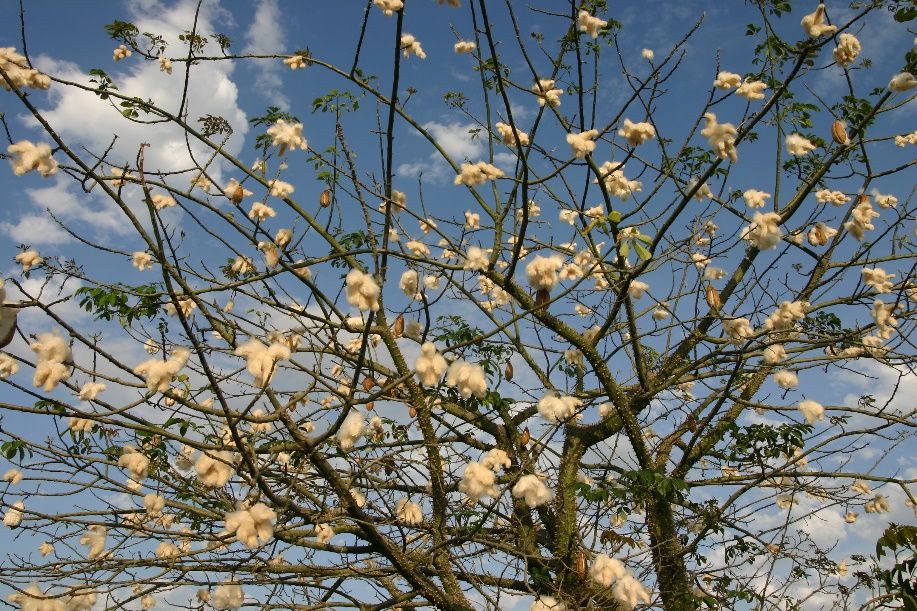
Credit: Stephen Brown, UF/IFAS
Flower
Flower color: pink, white/cream/gray
Flower characteristics: very showy
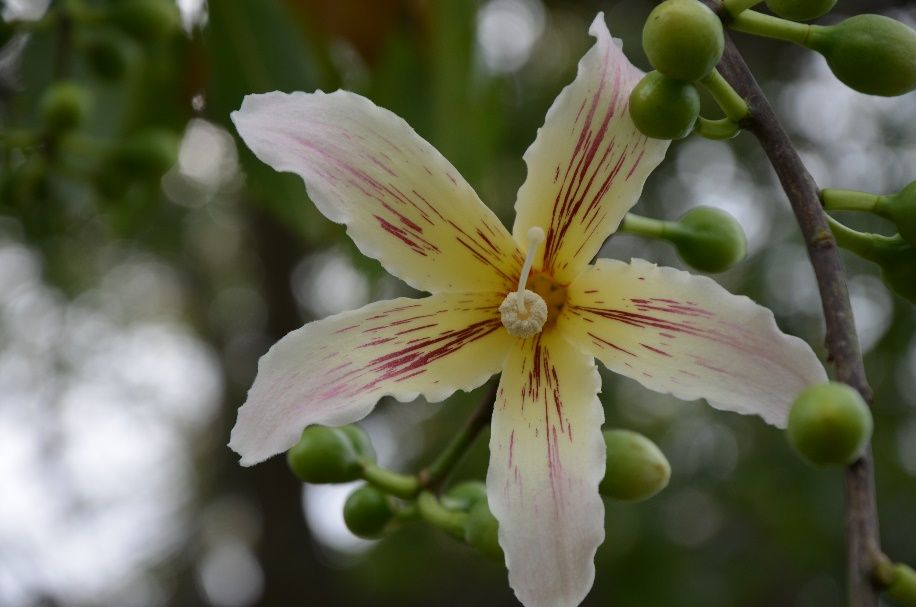
Credit: Stephen Brown, UF/IFAS
Fruit
Fruit shape: oval, round
Fruit length: 6 to 12 inches
Fruit covering: dry or hard
Fruit color: brown, white/gray
Fruit characteristics: does not attract wildlife; showy; fruit/leaves not a litter problem
Trunk and Branches
Trunk/bark/branches: branches don't droop; very showy; typically one trunk; no thorns
Pruning requirement: needed for strong structure
Breakage: resistant
Current year twig color: green
Current year twig thickness: medium
Wood specific gravity: unknown
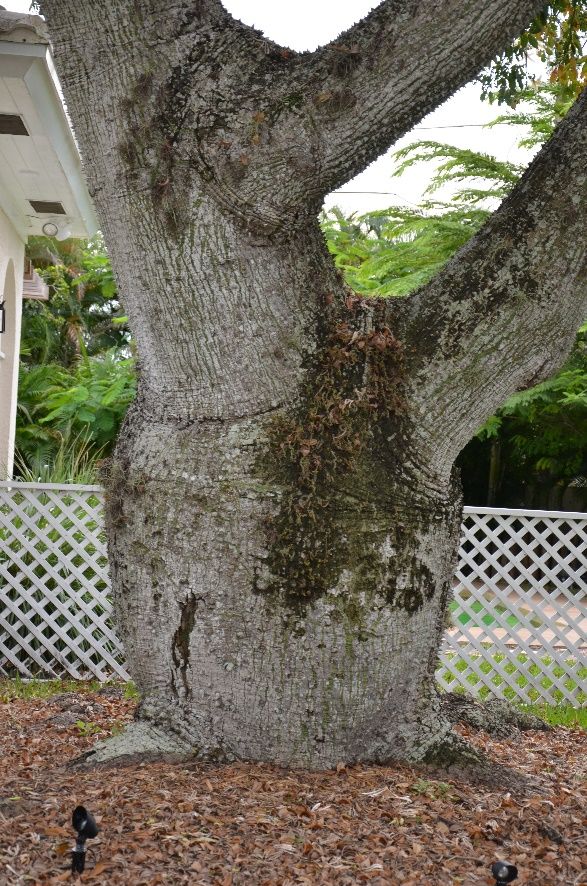
Credit: Stephen Brown, UF/IFAS
Culture
Light requirement: full sun
Soil tolerances: clay; sand; loam; alkaline; acidic; occasionally wet; well-drained
Drought tolerance: high
Aerosol salt tolerance: low
Other
Roots: can form large surface roots
Winter interest: yes
Outstanding tree: yes
Ozone sensitivity: unknown
Verticillium wilt susceptibility: unknown
Pest resistance: free of serious pests and diseases
Use and Management
An excellent specimen tree for parks, parking lots, and other large landscapes, silk-floss tree is spectacular when in bloom, producing an outstanding show of color in the fall. Large roots often form at the base of the trunk just beneath the soil, so be careful not to plant the tree too close to sidewalks or pavement. Fifteen feet from curbs, driveways, and sidewalks should be adequate.
Prune the tree to be sure that only one central trunk develops when the tree is young. The central leader becomes less vigorous in middle age, allowing lateral limbs to develop into the main structure of the tree and produce a spreading form. Although most branches are horizontal and well attached to the tree, upright branches can develop with embedded bark that can cause a branch to split from the trunk. Prevent this by pruning the major limbs so they remain less than half the diameter of the trunk.
Flowering best in full sun, silk-floss tree will thrive on any reasonably fertile soil with good drainage. It is not salt tolerant but does tolerate high pH. Grafted trees are preferred as they bloom earlier and at a smaller size.
Two grafted selections are available: 'Majestic Beauty' has rich pink flowers, and 'Los Angeles Beautiful' has wine red flowers. The cultivar 'Monsa' has a thornless trunk and pink fall flowers.
Propagation is by seed or grafting.
Pests and Diseases
No pests or diseases are of major concern.
Literature Cited
University of Florida, Institute of Food and Agricultural Sciences. 2018. "Assessment of Non-native Plants in Florida's Natural Areas" (https://assessment.ifas.ufl.edu, 4/29/2019) Gainesville, FL, 32611-4000, USA.